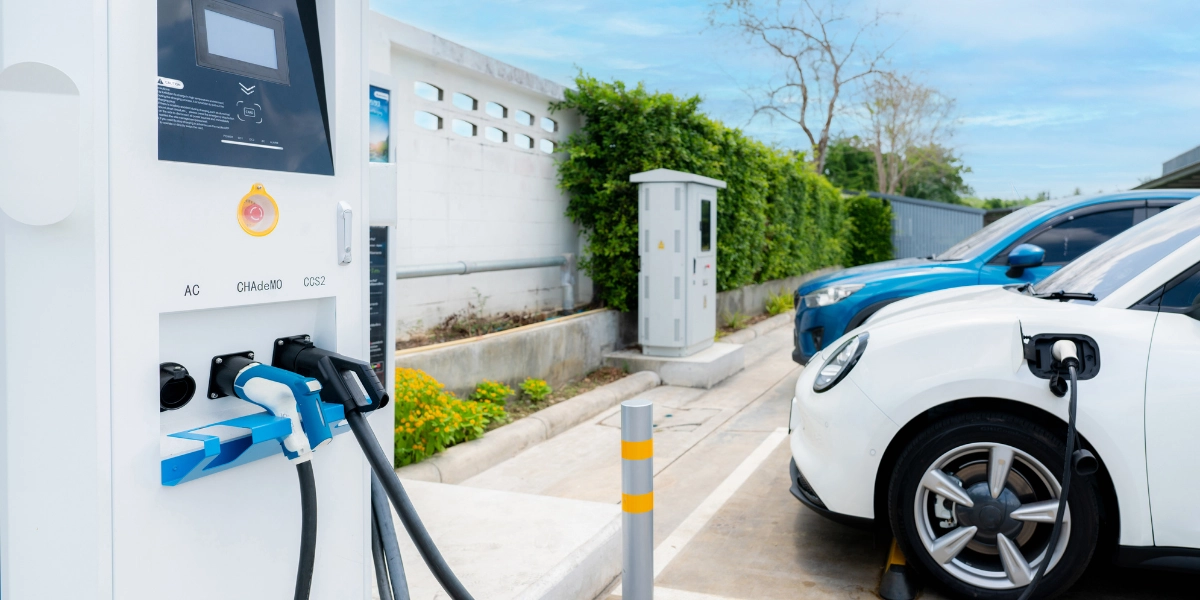
- Blog
- 3 Apr 2025
Composites in Electric Vehicles
The rise of electric vehicles (EVs) has sparked a revolution in the automotive industry, driving demand for materials that improve performance, safety, and energy efficiency. One of the most significant advancements in this field is the use of composites in electric vehicles. These advanced materials, already popular in composites in automotive applications, offer unique benefits that traditional metals can’t match. From reducing vehicle weight to enhancing battery efficiency, composites are transforming how EVs are designed and manufactured. As the industry pushes for longer ranges, faster acceleration, and better safety, composites play a key role in meeting these goals while supporting sustainable mobility.
What Are Composites in Electric Vehicles and Why Are They Used in EVs?
Composites are materials made by combining two or more substances to create a product with enhanced properties. In composites in electric vehicles, materials like carbon or glass fibers are mixed with resins or engineering plastics to form lightweight yet durable components. These composites help reduce vehicle weight, improving energy efficiency and driving range—key factors for EVs. They also offer excellent strength, corrosion resistance, and design flexibility. Additionally, composites like thermal insulation materials support better heat management, especially around batteries, contributing to improved performance and safety in electric vehicles.
How Composites Enhance Performance in Electric Vehicles
Composites in electric vehicles significantly improve performance by reducing weight, increasing strength, and enhancing thermal management. These materials help EVs accelerate faster, maintain better safety standards, and improve battery efficiency, all while supporting energy savings and longer driving ranges.
Weight Reduction for Improved Acceleration
One of the main advantages of composites is their lightweight nature. Using materials like carbon fiber structural reinforcement helps reduce the overall weight of EVs, leading to faster acceleration and better energy efficiency. A lighter vehicle demands less power from the battery, extending driving range and improving overall performance.
Enhanced Structural Strength and Crash Safety
Despite being lightweight, composites offer excellent strength and durability. They provide high impact resistance, improving crash safety by absorbing and distributing collision forces. This added strength helps protect passengers and sensitive components, like the battery pack, making EVs safer on the road.
Better Thermal Management for Battery Efficiency
Composites also support better heat regulation within EVs. Thermal insulation materials are used to manage battery temperatures, preventing overheating and ensuring optimal performance. Effective thermal management not only improves battery efficiency but also extends its lifespan, contributing to the overall reliability of the vehicle.
Efficiency Benefits of Composites in EV Manufacturing
The use of composites in electric vehicles not only enhances performance but also streamlines the manufacturing process. Composites offer excellent design flexibility, allowing complex shapes and integrated components to be produced more easily than with traditional metals. This reduces the number of parts and assembly steps, leading to faster production times and lower costs. Additionally, lightweight materials like engineering plastics help decrease energy consumption during manufacturing and improve the overall sustainability of EV production. Composites also require less maintenance over time, contributing to long-term cost savings for both manufacturers and consumers.
Incorporating composites in electric vehicles has become essential for improving performance, efficiency, and safety. From reducing weight for better acceleration to enhancing structural strength and managing battery temperatures, composites offer multiple benefits that support the evolution of EV technology. Moreover, their role in simplifying manufacturing processes and promoting sustainability makes them a key material in the future of electric mobility. As the demand for high-performing, energy-efficient EVs grows, composites will continue to drive innovation and shape the next generation of electric vehicles.


